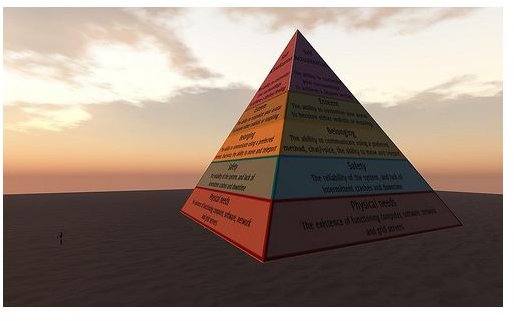An Overview of Motivation Theories and Organizational Behavior Part 1 of 2
Maslow’s Hierarchy of Needs Theory
The Need Hierarchy theory of Abraham Maslow, first expounded in 1943, ranks amongst the earliest studies linking motivational theory and organizational behavior.
Maslow’s Hierarchy of Needs Theory lists a hierarchy of five need levels:
- Physiological needs, or the need for basic necessities such as food, water, and shelter
- Safety needs, or the need for security in both home and work
- Social needs, or the need for loving, acceptance, and group affiliation
- Esteem needs, or the need for recognition and acknowledgment, and self-respect
- Self-actualization needs, or the need to develop to one’s fullest potential
An employee works his way up the need hierarchy, and on fulfilling a need level, aspires for the next level. For instance, an employee already having attained recognition and acknowledgment no longer remains motivated by rewards such as recognition and acknowledgment, and would instead require opportunities for self-actualization to remain motivated. Conversely, an employee frustrated by the inability to fulfill higher-level needs may strive to fulfill lower level needs.
Organizations can motivate employees by identifying the individual employee’s position in the need hierarchy and creating conditions that make it possible for him or her to achieve such needs through efforts in the workplace. For example, good leadership can facilitate better group communications.
Image Credit: flickr.com/Laurence Simon
Alfred Alderfer’s ERG Theory
Alderfer’s ERG theory is a modification of Maslow’s need hierarchy theory, and holds motivation dependent on three need dimensions: Existence, Relatedness, and Growth. Existence refers to desire for physiological and materialistic well-being, Relatedness refers to the desire to have significant positive relationships with other people of consequence, and growth refers to the desire to grow and use one’s innate abilities to the fullest potential.
The theory holds that an individual remains motivated to any of these three need categories:
- Need for achievement (nAch), such as the desire to do things in a better or efficient way, to solve complex problems, and the like
- Need for affiliation (nAff) such as the desire to establish and maintain good relations with others, to become part of a group, and the like
- Need for power (nPower), such as the desire to assume leadership, become a decision making authority, and the like
The order of importance of these three needs varies among individuals. Organizations looking to motivate an employee need to focus on individual thought processes to identify the dominant need category, and establish performance rewards that fulfill such needs.
Victor Vroom’s Expectancy Theory
Victor Vroom’s Expectancy theory holds that employees perform to the level that they believe maximize their overall best interests. The prospects of desirable rewards that satisfy needs and a strong desire to satisfy needs motivate employees to perform to their potential.
The Expectancy Theory holds motivation as a function of Expectancy, Instrumentality, and Valence.
Expectancy refers to the expectations and confidence of employees regarding their ability to perform a task, and depends on factors such as basic skills required for the task, support expected from superiors and subordinates, availability of required tools and equipment, and the like.
Instrumentality refers to the perception of whether accomplishment of the task leads to the desired results. This depends on factors such as rules of performance and reward, transparency and trust in the process, and the like.
Valence refers to the emotional orientations of people regarding the outcomes or rewards, or the level of satisfaction they expect to get from the rewards. A reward motivates only if employees have a positive valence, or a preference to have the specified reward to not having it. For instance, some employees may prefer having time off, whereas other employees might not have the need for time off and might prefer money or achievement.
Organizations looking to motivating employees in the workplace need to ensure that all the three factors: Expectancy, Instrumentality, and Valence remain positive or high. Even achieving two out of these three factors does not motivate the employee.
Equity Theory

John Adam’s equity theory of motivation holds that people gauge the fairness of their work outcomes not based on the rewards they get in return for their work, but the extent of their rewards for the work put in relative to what others get. Individuals who perceive that they receive relatively less than others in proportion to their work inputs experience negative equity, and individuals who perceive that they receive relatively more than others in proportion to their work inputs experience positive equity.
Organizations looking to motivate employees in the workplace need to ensure positive equity and avoid negative equity. Factors that trigger positive or negative equity are changes in work inputs, changes in outcomes, changes in the comparison person, and the like. The key to redress negative equity includes effective communication of reliable evaluation standards and comparison points to the employees.
Image Credit: Wikimedia Commons
Reinforcement Theory
B. F. Skinner’s reinforcement theory states that the individual’s behavior is a function of its reinforcement, which in turn bases itself on the “law of effect.”
Reinforcement is the administration of a behavior resultant consequence, and proper management of reinforcement helps change the direction, level, and persistence of an individual’s behavior. The law of effect holds people repeat behavior that results in a pleasant outcome and avoid behavior that results in unpleasant outcomes. Organizations looking to motivate employees need to indulge in the systematic reinforcement of desirable work behavior.
The strategies to reinforce desirable work behaviors include
- using positive reinforcement through immediate rewards and encouragement whenever positive behavior occurs
- withdrawal of negative consequences to increase the likelihood of repeating the desired behavior in a similar setting
- inflicting punishment or the administration of negative consequences to reduce the likelihood of repeating an undesired behavior in similar settings
- extinction, or withdrawal of the reinforcing consequences for a given behavior to discourage repetition
Herzberg’s Motivator-Hygiene Theory
Herzberg’s Motivator-Hygiene theory ranks among the earliest studies of motivational theories and organizational behavior. This theory approaches motivation through job satisfaction, and hold that jobs that do not offer achievement, recognition, stimulating work, responsibility and advancement do not provide satisfaction whereas jobs that offer achievement, recognition, stimulating work, responsibility and advancement provide satisfaction, and hence motivation.
Poor company policies, administration, supervision, pay, interpersonal relationships with supervisors, and working conditions cause dissatisfaction and demotivate employees whereas good policies, efficient administration, effective supervision, good pay, and good interpersonal relationships and working conditions create job satisfaction that motivates employees to work to their potential.
